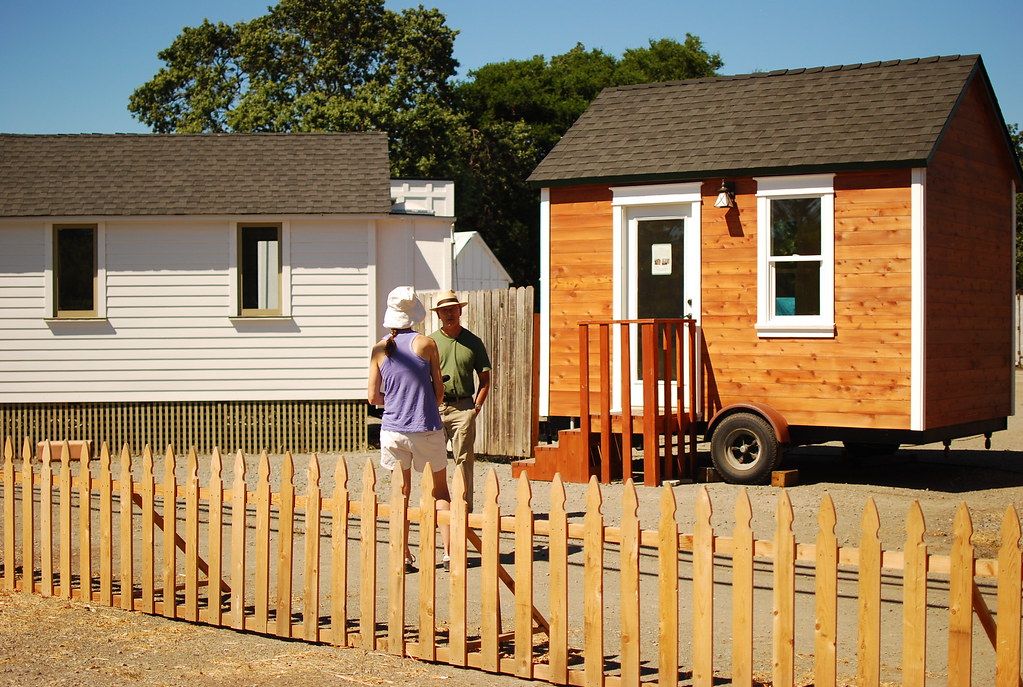
The quiet luxury of New Canaan, Connecticut, has recently become the backdrop for a high-profile real estate drama, culminating in the complete demolition of actor Richard Gere’s former 32-acre estate. This significant event, unfolding eight months after Gere sold the property, has not merely reshaped a parcel of land; it has ignited a fierce public debate and drawn sharp criticism, particularly from Lulu Simon, the daughter of legendary musician Paul Simon, who once called the historic mansion home. The story encapsulates a complex interplay of celebrity decisions, development aspirations, and the emotional resonance of a beloved family dwelling.
The estate’s transformation from a venerable 1938 brick Colonial to an empty parcel of land represents a poignant moment in local history, marking the largest new development in the area since 2007. While developers move forward with plans for a luxury subdivision, the narrative is deepened by the strenuous efforts of a dedicated salvage company that worked to rescue unique architectural elements from the historic structure. This preservation initiative underscores a broader cultural appreciation for the quality and design inherent in older homes, even as the march of new construction reshapes landscapes.
At the heart of the unfolding controversy lies not just the fate of a building, but also allegations of broken promises and the public’s fascination with the personal decisions of high-profile figures. The story extends beyond property lines, touching upon themes of legacy, environmental stewardship, and the evolving dynamics of celebrity ownership. We delve into the specifics of this multi-faceted event, examining the various perspectives and the lasting impact on all involved.

1. **The End of an Era: Richard Gere’s Former Mansion Razed for Development**Richard Gere’s former estate in New Canaan, Connecticut, a historic 1938 six-bedroom brick Colonial, has been entirely demolished. This significant act occurred eight months after the Hollywood star sold the property to developer SBP Homes, concluding its storied existence as a private residence. The once-grand mansion, described as a Georgian-style structure designed by architect Harold Reeve Sleeper, now stands as nothing more than an empty parcel of land, signifying a profound change for the 32-acre property.
Reports from Hudson Valley House Parts, a salvage company involved in the project, confirm that the house has been completely taken down. This demolition paves the way for a new era of development on the sprawling acreage, a move that has been met with both anticipation from the developers and dismay from those who valued the home’s historical and architectural integrity. The transformation represents a definitive end for a structure that had stood for nearly a century, witnessing various periods of American history and housing prominent figures.
The removal of the mansion and its accompanying 2,400-square-foot guest cottage underscores the relentless pace of modern real estate development. Despite its age and the sentimental attachments it held for previous occupants, the property was ultimately deemed suitable for a comprehensive redevelopment. This decision highlights the economic pressures and market demands that often prioritize new construction over the preservation of existing historical structures, even those with significant cultural cachet. The site is now primed for a new chapter, albeit one that begins with a blank slate where a landmark once stood.

2. **From Music Legend to Hollywood Star: The Estate’s Recent Ownership History**The 32-acre New Canaan property boasts a notable lineage of owners, adding layers to its recent demolition. Actor Richard Gere purchased the 1938 six-bedroom mansion from renowned singer-songwriter Paul Simon in 2022 for $10.8 million. Simon and his wife, Edie Brickell, had owned the estate for years, acquiring it for $16.5 million in 2002, making it a cherished family home for their children, including Lulu Simon.
Gere’s acquisition of the property in 2022 was widely reported, and at the time, he and his wife, Alejandra Silva, reportedly harbored intentions of transforming the estate into a working farm. Their vision included cultivating mushrooms, honey, and potentially even raising goats, a plan that, according to the context, caused some trepidation among local planning commission members regarding potential odors. This aspiration, however, never fully materialized, setting the stage for the property’s eventual sale and subsequent demolition.
Just two years after purchasing it, Gere sold the estate in November 2024 for $10.75 million in an off-market deal to SBP Homes, a real estate developer. This quick turnaround, coupled with the property’s previous ownership by a music icon and its subsequent celebrity status under Gere, has undoubtedly amplified public interest in its ultimate fate. The progression from a celebrated musician’s haven to an actor’s unfulfilled dream, and finally to a developer’s blank canvas, charts a compelling course through the annals of Connecticut real estate.

3. **Lulu Simon’s Public Condemnation: Allegations of a Broken Promise**The demolition of the New Canaan mansion has unleashed a torrent of criticism, most notably from Lulu Simon, the 30-year-old daughter of Paul Simon and Edie Brickell. Lulu Simon publicly voiced her profound anger and disappointment, directly blaming Richard Gere for the dwelling’s destruction. Taking to her Instagram Stories, she did not mince words, declaring, “Just in case anyone was wondering if I still hate Richard Gere – I do!” Her sentiments quickly resonated across social media, drawing significant attention to the controversy.
At the core of Lulu Simon’s wrath is an allegation that Gere reneged on a crucial agreement. She claimed that Gere had promised to “take care of the land as [a] condition of his purchase” when he bought her childhood home from her father. According to her account, Gere proceeded to “never actually move in & just sold it to a developer as 9 separate plots.” This perceived betrayal fueled her deep-seated resentment, suggesting a breach of trust regarding the preservation of the beloved estate and its natural environment.
Lulu Simon’s impassioned statements highlighted the emotional connection she and her family had to the property, which served as her childhood home. Her accusations underscore the profound impact that such development decisions can have on individuals with deep personal ties to a place. The public airing of her grievances against a prominent actor has transformed what might have been a local real estate transaction into a widely discussed debate about responsibility, celebrity conduct, and the sentimental value of home. Her strong words painted a vivid picture of her indignation, sparking widespread discussion about the situation.

4. **SBP Homes’ Vision: Transforming 32 Acres into a Nine-Lot Subdivision**Following their purchase of Richard Gere’s former estate for $10.75 million, SBP Homes, the developer, swiftly moved forward with ambitious plans for the 32-acre parcel. Their vision involves transforming the expansive single estate into a nine-lot subdivision, a significant undertaking that marks the largest new development in the New Canaan area since 2007. Each of these new individual properties is planned to range in size from 2.2 to 4.8 acres, offering substantial lots for future homeowners.
Adam Sherer, project manager for SBP Homes, expressed enthusiasm for the project at the time of the sale. He stated, “We’re very excited about this project. From the beginning, our goal was to thoughtfully accommodate a wide range of interests in how the property would be developed.” This statement suggests a deliberate approach to the subdivision, aiming to create desirable new homes while navigating the complexities of land development in a high-value area like New Canaan.
The developer’s strategy involves selling the lots empty, providing buyers with the unique opportunity to construct their dream homes from the ground up. This approach allows for customization and modern design, appealing to a segment of the market seeking bespoke residences rather than pre-existing structures. The subdivision represents a strategic investment in the burgeoning luxury housing market of Connecticut, signaling a shift from large, historic estates to multiple, custom-built residences designed to meet contemporary demands. The new layout promises to reshape the landscape of this affluent community for years to come.

5. **The Critical Role of Architectural Salvage in Preserving History**Amidst the controversy and demolition, a crucial effort was underway to salvage pieces of the historic mansion, spearheaded by Hudson Valley House Parts. This Newburgh, NY-based salvage company, recognized the inherent value and historical significance of many architectural elements within the 1938 brick Colonial. Their intervention served as a vital measure to prevent these unique features from being lost forever to the wrecking ball, offering a silver lining to the otherwise irreversible destruction of the property.
Reggie Young, the founder of Hudson Valley House Parts, articulated the importance of their work, stating, “It’s a real shame the house is being torn down.” He and his team worked diligently with the developers to secure access and time to extract valuable components before the full demolition commenced. This collaboration highlights the growing awareness within the development industry of the potential for sustainable practices and the preservation of historical materials, even when the structure itself cannot be saved. The painstaking process ensured that fragments of the past could endure.
The successful distribution of these salvaged items to new owners across different locations demonstrates the enduring appeal and value of historical architectural materials. Far from being mere debris, these components are sought after by individuals passionate about history and those looking to integrate unique, high-quality elements into their own homes. The work of Hudson Valley House Parts underscores a broader movement to recycle and repurpose building materials, offering a tangible link to the past and reducing waste in construction. It represents a dedication to heritage, even when a building’s original purpose has expired.

6. **Treasures Rescued: Specific Elements Saved from the Wrecking Ball**The diligent efforts of Hudson Valley House Parts and its partners yielded an impressive array of salvaged items from Richard Gere’s former estate, each piece carrying a fragment of the mansion’s original charm and history. Among the most notable items rescued were a complete cerused oak library, featuring a bowed fireplace and intricate wall paneling with built-ins, and two steel nautical-motif, mid-century bay windows. These elements reflected the unique design and craftsmanship prevalent in homes of that era, adding character and value to any space they now adorn.
Further preserving the estate’s distinctive architectural character, the salvage team also secured colonial window sashes and a Greek-revival doorway, alongside limestone and marble mantels. An Instagram update from Hudson Valley House Parts highlighted that the mansion’s French door sets, additional steel bay windows, and casement windows were also saved and, at one point, still available for purchase. These components, once integral to the mansion’s aesthetic, are now finding new life in other residences across the country.
Reggie Young noted that the salvage company partnered with Delaware Valley House Parts in New Jersey and Green Circle Auctions to facilitate the preservation and resale of these items. The broad distribution of these unique features, from ornate woodwork to original stonework, illustrates the network of individuals and businesses committed to architectural salvage. These rescued treasures serve as tangible links to the past, allowing fragments of a demolished landmark to grace new homes and continue their functional and aesthetic lives, fostering a continuity of design and historical appreciation.

7. **The Enduring Appeal: Blending Celebrity Provenance with Quality Craftsmanship**The salvaged items from Richard Gere’s former estate have demonstrated a strong market appeal, a success attributed to a combination of factors. Reggie Young, founder of Hudson Valley House Parts, noted that while the home’s celebrity past did “pique interest,” it was ultimately the inherent “quality, design, and unique style” of the materials that truly lured in buyers. This insight suggests that while the allure of a celebrity connection can provide an initial draw, the intrinsic value of historical craftsmanship remains paramount for serious purchasers of architectural salvage.
Young elaborated on the motivations of his typical clientele, explaining that individuals seeking salvage items are often “passionate about history” and also keen to “save some money.” This dual appeal underscores a market that values both the narrative behind a piece and its practical benefits. The “fun and sexy” aspect of a celebrity connection, as Young described it, serves as an additional bonus rather than the sole determinant of a sale, reinforcing that substance often trumps superficiality in the world of historical artifacts.
Indeed, the enduring quality of materials from a 1938 brick Colonial, built with a level of craftsmanship often unseen in modern construction, inherently possesses a robust appeal. Whether it’s the rich oak of a library or the intricate detailing of a limestone mantel, these pieces offer a distinct character and durability that newer alternatives frequently lack. The blend of a compelling backstory with tangible, high-quality design ensures that these salvaged elements continue to find new homes, contributing to a sustainable cycle of architectural reuse and appreciation that extends far beyond the brief moment of their former owner’s fame.

8. **Richard Gere’s Relocation to Spain: A Family-Driven Decision**The sale and subsequent demolition of Richard Gere’s Connecticut estate stemmed from a deeply personal, family-driven decision rather than a simple real estate transaction. Gere and his wife, Alejandra Silva, had determined their future lay in Madrid, Spain, a move primarily motivated by a desire to be closer to Alejandra’s family. This significant life pivot prioritized his wife’s needs, acknowledging her “generosity” in living in his world for six years.
Gere publicly articulated this reciprocal commitment in an April 2024 interview with Vanity Fair Spain. He stated, “For Alejandra… she was very generous in giving me six years living in my world, so it is only fair that I give her at least another six living in hers.” This statement highlighted the thoughtful, relational dynamics underpinning their decision, demonstrating a mutual respect for each other’s cultural ties.
Initially, Gere and Silva had planned to transform the estate into a working farm, envisioning mushrooms, honey, and even goats, which had caused some trepidation among local planning officials regarding potential odors. However, the compelling pull of Alejandra’s family and home country ultimately superseded these agricultural ambitions. This shift in priorities paved the way for the property’s eventual off-market sale, directly leading to its current state.

9. **A Look Back at the Grandeur of the 1938 Georgian-Style Estate**Prior to its demolition, Richard Gere’s former estate in New Canaan, Connecticut, stood as an exemplar of classic architectural design and refined luxury. This 1938 six-bedroom brick Colonial was a distinguished Georgian-style structure, notably designed by architect Harold Reeve Sleeper. Its historical provenance and aesthetic significance made its fate particularly poignant, sparking widespread discussion.
The expansive 32-acre property featured an impressive 8,800-square-foot main mansion, offering six bedrooms, seven bathrooms, three powder rooms, and multiple fireplaces. This demonstrated a grand scale and a commitment to comfort and elegance. The architectural ethos of its time prioritized sophisticated design fused with high-end practicality for its high-profile residents.
A 2,400-square-foot guest cottage further enhanced the estate’s capacity for privacy and hospitality. Complementing these structures were lavish outdoor amenities, including terraced patios, a sparkling pool, meticulously manicured gardens, and extensive woodland trails, creating a sprawling private sanctuary.
The picturesque landscape was completed by a rock-rimmed brook, a natural pond, and a charming waterfall, collectively creating an idyllic and tranquil environment. This estate was a significant landmark, embodying both natural beauty and sophisticated human design. Its demolition erased not only a structure but a tangible piece of local history and a prime example of early 20th-century luxury living.

10. **Paul Simon’s Daughter and Her Deep Childhood Connection to the Property**For Lulu Simon, the 30-year-old daughter of music legend Paul Simon and Edie Brickell, the New Canaan estate held profound sentimental value. This was her childhood home, a place where indelible memories were forged and deep personal connections established. The property represented a foundational part of her formative years, a sanctuary filled with the echoes of family life and the freedom of sprawling natural surroundings.
Paul Simon and Edie Brickell had owned the mansion for years, acquiring it in 2002 for $16.5 million. It served as the cherished family home where their children, including Lulu, grew up. This extensive family tenure imbued the property with layers of familial history, importantly, where her pets were buried in the backyard, a detail fueling her later fervent public statements.
This deep emotional investment is key to understanding the intensity of Lulu Simon’s reaction to the property’s sale and subsequent demolition. Her public condemnation of Richard Gere stemmed directly from this personal bond, transcending a mere real estate transaction. It was a perceived betrayal of a place holding immense significance to her identity, transforming a celebrity property sale into a deeply felt personal grievance.
The controversy became less about property development and more about the sanctity of home and the emotional ties that bind individuals to specific places. For Lulu, the mansion’s destruction felt akin to erasing a part of her own history. Her voice became a powerful, intensely personal counterpoint to the commercial forces driving the development.

11. **The Vehemence of Lulu Simon’s ‘Haunting’ Message to Gere**Lulu Simon’s outrage over the demolition of her childhood home found expression in a series of highly publicized, emotionally charged social media posts directly targeting Richard Gere. Her Instagram Stories left no ambiguity about her sentiments. She commenced her tirade emphatically, declaring, “Just in case anyone was wondering if I still hate Richard Gere – I do!” This raw expression of animosity immediately seized public attention.
Her condemnation was firmly rooted in a specific accusation: that Gere had violated a crucial agreement made during his purchase. Lulu Simon claimed Gere “promised he would take care of the land as condition of his purchase” from her father. She further alleged Gere then “proceeded to never actually move in & just sold it to a developer as 9 separate plots :),” portraying his actions as a blatant breach of trust.
The depth of her anger escalated significantly in a subsequent post, moving from accusation to a dark, visceral wish. Over an image of Richard Gere juxtaposed with photos of her late pets, she wrote, “I hope my dead pets buried in that backyard haunt you until you descend into a slow and unrelenting madness.” This powerful curse underscored her profound personal grief and sense of betrayal.
Lulu Simon’s use of social media transformed a private real estate transaction into a public spectacle. Her words, particularly the “haunting” message, became a focal point of discussion, eliciting strong reactions. This incident vividly demonstrated how deep personal attachments to property can collide with commercial realities, especially when celebrity figures are involved.

12. **Public Reception and Diverse Opinions on Lulu Simon’s Outburst**Lulu Simon’s public condemnation of Richard Gere ignited a significant reaction across social media, highlighting a wide spectrum of public opinion. While many sympathized with her profound emotional connection to her childhood home and sense of betrayal, others offered a more critical perspective on her outburst. The online discourse mirrored broader societal views on celebrity, property rights, and personal accountability.
Some internet users, for instance, countered Lulu Simon’s intense message with blunt remarks, such as “Get a job girl and buy your own house.” This commentary suggested a lack of sympathy, perhaps viewing her as entitled or her emotional reaction as disproportionate given her family’s prominent status. Such responses often prioritize individual financial agency over sentimental attachments in real estate matters.
Conversely, many resonated with Lulu’s sentiments, understanding the profound pain associated with losing a childhood home, particularly when a promise was allegedly broken. This segment often rallied in support, viewing Gere’s actions as a callous disregard for a family’s legacy. The debate effectively juxtaposed the perceived sanctity of personal history against the often-unyielding forces of real estate development.
The public reception underscored the complex nature of celebrity involvement: it amplifies attention but also invites intense scrutiny and diverse interpretations. Lulu Simon’s outburst served as a lightning rod, drawing both fervent support and sharp criticism, creating a multifaceted discussion beyond simple property sale facts.

13. **Richard Gere’s New Chapter: Finding Happiness and Fulfillment in Spain**Amidst the public controversy, Richard Gere has seamlessly transitioned into a new, fulfilling chapter of his life in Madrid, Spain. His move, with wife Alejandra Silva and their young children, represents a deliberate choice to prioritize family and a different cultural experience. Gere has been open about his profound happiness and the positive impact this relocation has had.
During an interview with Elle España in January, Gere expressed deep contentment, stating, “The truth is that you are seeing us in our momentum. We are happier than ever.” He largely attributed this happiness to Alejandra, noting, “Alejandra, because she is at home and I because, if she is happy, I am happy.” This highlights a strong marital bond and shared commitment to building a satisfying life.
This new chapter in Spain is more than a change of scenery; it signifies a deeper reorientation of Gere’s priorities. After years in the United States, his “world,” he embraced immersing himself in Alejandra’s cultural environment. The decision reflects a conscious effort to balance their individual backgrounds and forge a harmonious family life closer to Alejandra’s roots.
His statements consistently convey peace and satisfaction with this new direction. The public discourse around his former home appears a distant backdrop to Gere actively constructing a life focused on familial joy and cultural integration. He is clearly finding “happiness and fulfillment” far from Connecticut controversies.

14. **A Glimpse into the Gere-Silva Family Life and Shared Values in Madrid**Life in Madrid for Richard Gere and Alejandra Silva is depicted as a vibrant and harmonious family existence, grounded in shared values and mutual respect. The couple, married in 2018, are raising their two young sons, Alexander, five, and James, four, in Spain. Alejandra is also mother to son Albert, 11, while Gere shares son Homer, 25, creating a blended family dynamic.
Alejandra has offered intimate glimpses into their daily life, describing Richard as a “very devoted and present father.” She fondly noted, “He loves to read them stories,” painting an idyllic picture of a caring and engaged parent. While admitting Gere “doesn’t cook,” she added, “I do it, but when I cook, he plays the guitar,” illustrating complementary roles and a shared appreciation for arts.
Their relationship is characterized by a deep, almost spiritual connection, with Alejandra referring to them as “soulmates.” She emphasized their shared worldview, stating, “We see the world in the same way and from the first moment we felt like we have known each other for a long time.” This profound alignment hints at a karmic bond: “We were united by the karma of our past lives.”
Gere himself expressed clear contentment with their life in Spain, noting that his “wife is so happy” there. He acknowledged the benefits for their children, stating, “[Our] youngest kids are growing up there, their Spanish is perfect.” This collective happiness and seamless integration into Spanish culture underscore the success of their relocation, marking a settled and joyful phase for the Gere-Silva family.
The saga of Richard Gere’s former Connecticut estate is a compelling narrative that transcends a simple real estate transaction. It intricately weaves together themes of historical preservation, the evolving landscape of luxury development, the profound emotional attachments to home, and the complex public perception of celebrity actions. While the historic mansion has yielded to the march of progress, its story, amplified by passionate voices like Lulu Simon’s and softened by Gere’s pursuit of family happiness, leaves an indelible mark. It’s a vivid reminder that beneath the headlines of property and fame, lie deeply personal stakes and enduring legacies that continue to resonate long after the wrecking ball has done its work, reshaping both physical landscapes and public discourse.



